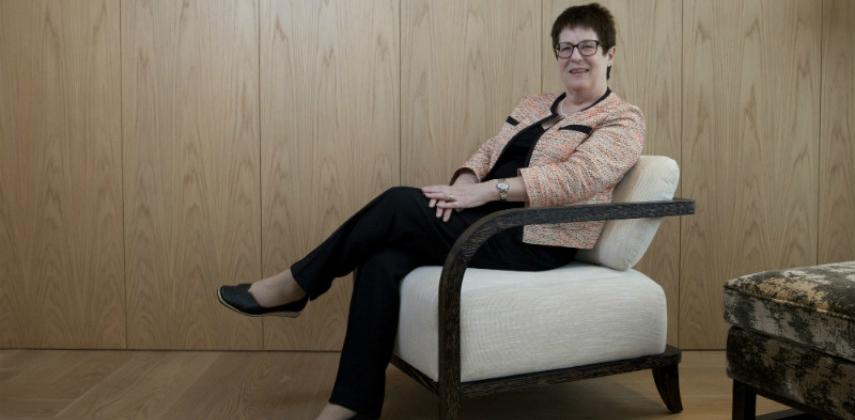A fascination for the heavens developed into a love of physics which launched the career of University of Kent vice-chancellor Dame Julia Goodfellow
A distinguished career in academia often stems from an early sense of wonder leading to a lifelong interest in a specific field. For Professor Dame Julia Goodfellow, it was childhood nights spent gazing at the stars which proved the initial inspiration for later studies and pioneering research into some of the scientific principles that govern our world.
“I was fascinated by the universe,” says the vice-chancellor of the University of Kent in south-east England, who visited Hong Kong in April to meet alumni and discuss possible areas of cooperation with other tertiary institutions. “A lot of people get excited looking up at the sky and wondering what is out there. It was like that for me – the breadth of size and time that you could look at, the big and the small, [from star systems] to asking what an electron is.”
Those impressions and questions soon developed into a love of science, particularly physics. As one of relatively few following that path at her all-girls’ school, Goodfellow had the support and encouragement to ignore both potential barriers and talk of limited opportunities.
Instead, she headed to university, won kudos by turning a final-year research project into an academic publication, and then went on to do a PhD in biophysics at the Open University Research Unit in Oxford, followed by post-doctoral work at Stanford University in the US.
“In the 1970s, biosciences were getting really exciting and I wanted to be in something which was really up to date,” Goodfellow says. Her research centred on the structures of biologically important molecules in order to gain a better understanding of their function and dynamics. The starting premise was that most biological atoms in the human body depend on water to behave normally and have the correct folding and shape. As an example, one early project looked at the cornea and the structure of molecules there which allows light through. Her subsequent use of computational methods to achieve results helped push back the frontiers of science and made her a recognised pioneer in the field.
“It is quite an applied area, studying how biomolecules behave, what controls their interactions, or how drugs can block that behaviour,” she says. “Looking back, I enjoyed the research and the control over my own life. I could do things somewhat in my own time and liked that independence.”
A logical next step, though, was a teaching role. That came with a professorship in biomolecular sciences at Birkbeck, University of London, in 1995 and an offer to head the department of crystallography the following year. Success there led to another change of direction, with the offer in 2002 of the high-profile position of chief executive of the Biotechnology and Biological Sciences Research Council (BBSRC).
The post carried responsibility for overseeing grants and government funding for biosciences in universities and sponsored research institutes. In many ways, the offer was too good to refuse but, for Goodfellow, it also meant the reluctant acceptance that personal hopes of doing further specialist research would have to be put aside.
“I had to make a choice about doing one job well,” she says. “I didn’t feel doing my own research was compatible with a job where you have to put so much into getting grants and meeting students’ needs. I tried to compensate, though, by doing more work in the areas of science policy, science education, and general higher education, bringing the dialogue to the wider public and involving more people in schools.”
She notes that many individuals still find it difficult to pick up a book and read about science. However, changes to make it a compulsory subject in secondary schools in Britain are paying off, and courses like biomedical sciences are seeing new popularity at university level.
After a productive five years in what was basically a government role at the BBSRC, Goodfellow was ready for new challenges, and the role at the University of Kent provided just that. She has to oversee the constant push for improvement in everything from academic programmes and facilities to research and fund raising. She does this while also travelling the world to meet alumni and assess the viability of new partnerships with other institutions.
“Being closer to academics and students is an environment I like,” she says. “In a university, it is a collegiate style of working. It is about having a view of where you want to go and learning to listen to others.”
She is often asked to speak on the subject of leadership, particularly to encourage young women – in academia and elsewhere – to aim high. She is happy to do so, but also admits that her own approach to dealing with pressing management issues can be less than scientific.
“I’ve had a little training, but at times, it can be ‘seat of my pants’,” she says. “The main thing is I enjoy working with people and my ambition is to make the university even more successful than it is now.”


